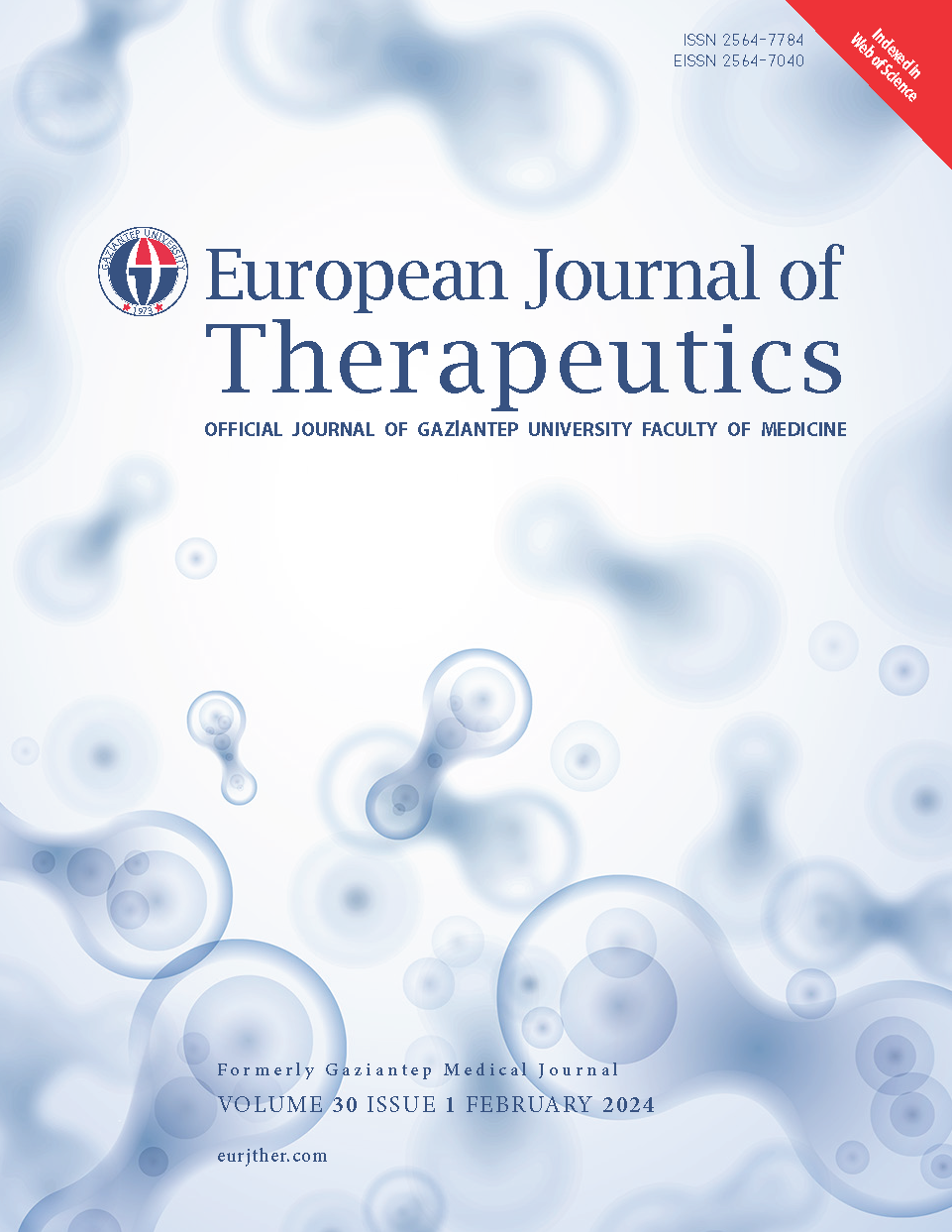A Modified Technique of Laparoscopic Closed-Entry by the Veress Needle: A Novel, Unique, Rapid, and Simple Procedure
DOI:
https://doi.org/10.58600/eurjther1846Keywords:
laparoscopic procedure, laparoscopic techniques, trocar insertion, umbilical port, Veress needleAbstract
Background: Gynecologists usually perform the laparoscopic closed-entry technique to access the intraperitoneal cavity, while general surgeons prefer the open-entry approach, which takes more time. This study aims to introduce and discuss the novel modified closed laparoscopic entry technique. This method involves cutting the fascia after the skin incision to allow only the Veress needle to enter, thus avoiding complications arising from the closed procedure. This approach may benefit safe and quick laparoscopic entry, especially for obese patients.
Method of Technique: The current approach, which we call the modified closed Veress technique (MCVT), is a modification of the previously defined Veress needle entrance method. After the skin is cut, the subcutaneous fat tissue is released with the Mosquito clamp, the muscular fascia is held and hung with the Kocher clamp, and the incision is created large enough to insert the Veress needle. Then, the Veress needle is passed through the parietal peritoneum, the final step before reaching the intraperitoneal cavity.
Results: In our Gynecology and Obstetrics clinic, the current technique for the first entrance to the intraperitoneal cavity was used in a total of 294 patients between the years 2019-2023. There were no intraoperative or postoperative complications associated with the current approach. Moreover, in 12 patients who failed with the standard closed technique, intraperitoneal gas charging was provided in the first trial with the MCVT.
Conclusion: Because it is possibly as safe as the open technique and as quick as the standard closed technique, the MCVT may be one of the alternative techniques for the first laparoscopic entry into the peritoneal cavity to prevent complications and save time. Nevertheless, more thorough and patient-based prospective randomized research is required on this topic.
Metrics
References
Levy L, Tsaltas J (2021) Recent advances in benign gynecological laparoscopic surgery. Fac Rev. 10:60. https://doi.org/10.12703/r/10-60
Alkatout I (2017) Complications of Laparoscopy in Connection with Entry Techniques. J Gynecol Surg. 33(3):81-91. https://doi.org/10.1089/gyn.2016.0111
Hasson HM (1971) A modified instrument and method for laparoscopy. Am J Obstet Gynecol. 110(6):886-887. https://doi.org/10.1016/0002-9378(71)90593-x
Hasson HM (1999) Open laparoscopy as a method of access in laparoscopic surgery. Gynaecol Endosc. 8(6):353-362. https://doi.org/10.1046/j.1365-2508.1999.00316.x
Peltrini R, Luca M, Lionetti R, Bracale U, Corcione F (2023) Open veress assisted technique for laparoscopic entry. J Minim Access Surg. 19(1):162–164. https://doi.org/10.4103/jmas.jmas_271_21
Uranues S, Ozkan OV, Tomasch G (2016) Safe and easy access technique for the first trocar in laparoscopic surgery. Langenbecks Arch Surg. 401(6):909-912. https://doi.org/10.1007/s00423-016-1474-4
Krishnakumar S, Tambe P (2009) Entry Complications in Laparoscopic Surgery. J Gynecol Endosc Surg. 1(1):4-11. https://doi.org/10.4103/0974-1216.51902
Ahmad G, Baker J, Finnerty J, Phillips K, Watson A (2019) Laparoscopic entry techniques. Cochrane Database Syst Rev. 1(1):CD006583. https://doi.org/10.1002/14651858.CD006583.pub5
Jansen FW, Kolkman W, Bakkum EA, de Kroon CD, Trimbos-Kemper TCM, Trimbos JB (2004) Complications of laparoscopy: an inquiry about closed- versus open-entry technique. Am J Obstet Gynecol. 190(3):634-638. https://doi.org/10.1016/j.ajog.2003.09.035
Arfi N, Baldini A, Decaussin-Petrucci M, Ecochard R, Ruffion A, Paparel P (2015) Impact of Obesity on Complications of Laparoscopic Simple or Radical Nephrectomy. Curr Urol. 8(3):149-155. https://doi.org/10.1159/000365707
Marchand GJ, Masoud A, King A, Brazil G, Ulibarri H, Parise J, Arroyo A, Coriell C, Goetz S, Moir C, Christensen A, Alexander T, Govindan M (2022) Systematic review and meta-analysis of Veress needle entry versus direct trocar entry in gynecologic surgery. BMJ Surg Interv Health Technol. 4(1):e000121. https://doi.org/10.1136/bmjsit-2021-000121
Downloads
Additional Files
Published
How to Cite
License
Copyright (c) 2023 European Journal of Therapeutics

This work is licensed under a Creative Commons Attribution-NonCommercial 4.0 International License.
The content of this journal is licensed under a Creative Commons Attribution-NonCommercial 4.0 International License.


















